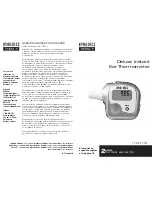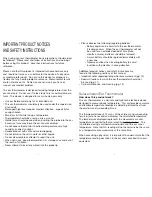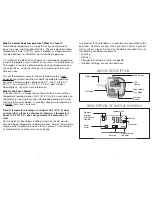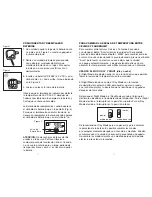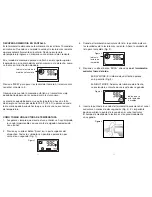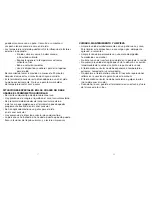
10
9
°
Figure 5
°
Figure 6
Fever Alarm
6. A beep sound will indicate the end of the measurement. Results
of the temperature measurement will be displayed (Figure 5). In
NIGHT MODE, the display will illuminate for five seconds.
If a temperature reading is greater than 100˚F (37.8°C), the fever
alarm will display a frowning face and beep twice to alert the user
that it is likely that a fever is present (Figure 6). THIS DOES NOT
MEAN THAT A FEVER IS NOT PRESENT AT A LOWER TEMPERA-
TURE. For more information on the Fever Alarm feature, please
refer the “What is the Fever Alarm?” section of this manual (page 3).
The temperature range of this ear thermometer is 50˚F (10°C) –
122˚F (50°C). If a measurement is below this range, the unit will
display “Lo” (Figure 7). If above this range, the unit will display “Hi”
(Figure 8).
The unit will display “Err” if the operating temperature is not within
the permissible range for measurement (see details in technical
section of this manual) (Figure 9).
7. The unit will automatically turn off after 30 seconds of non-use.
°
Figure 7
°
Figure 8
°
Figure 9
IMPORTANT NOTES REGARDING TEMPERATURE
MEASUREMENT
• The measurement results that users receive are for reference only.
If users have any health concerns, please consult a physician.
• It is not necessary to perform an “ear tug” or pull on the ear
before taking a temperature measurement.
• For additional measurements, users should wait at least 5
seconds between readings to ensure accuracy.
• Use the ear thermometer at room temperature, as extremes in
environmental temperature can impact accuracy. Unit should be
stored at room temperature. Before use, the unit must be at room
temperature for at least 30 minutes.
• Clean the waterproof probe with a cotton swab moistened with
alcohol between readings. Always keep rubbing alcohol/cleaners
away from children.
• It is recommended that you take multiple readings (three or more)
in the same ear and use the highest reading in the following
special circumstances:
• When taking the temperature of an infant younger
than three months.
• When taking the temperature of children under the
age of three who have special conditions, such as
compromised immune systems, and for whom the
absence or presence of a fever is critical.
• When you are first learning how to use this ear
thermometer and until you are obtaining
consistent readings.
Note: Slight temperature variations may be observed (+/- 0.3 –
0.5°F or +/- 0.2 – 0.3°C) in consecutive measurements. This is
common to all types of thermometers.
• Always take the temperature in the same ear, as readings may
differ from one ear to another.
• The ear must be free from excessive earwax buildup or other
obstructions in order to take an accurate reading. Note that you
should never attempt to clean inside ears, however, as this may
result in damage to the eardrum or surrounding tissues. Remove
only excess earwax that can be reached with a washcloth.
Consult a physician if you suspect excess earwax is present
within the ear.

